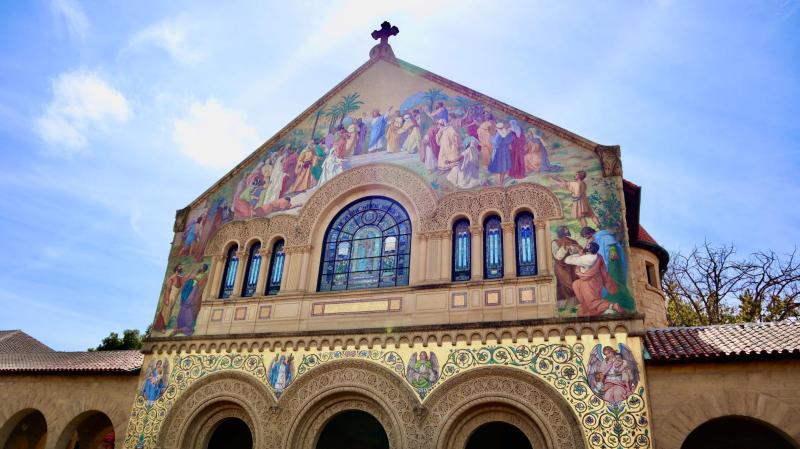Among many aspects of Stanford and the University of California, Berkeley’s historic rivalry, none has stood the test of time better than that between the two school’s iconic public artworks. I will review well-known sculptures, statues and mosaics on the two campuses, presenting them in their glory.
Battle of 19th-century figure sculptures: “The Football Players” vs. “The Burghers of Calais”
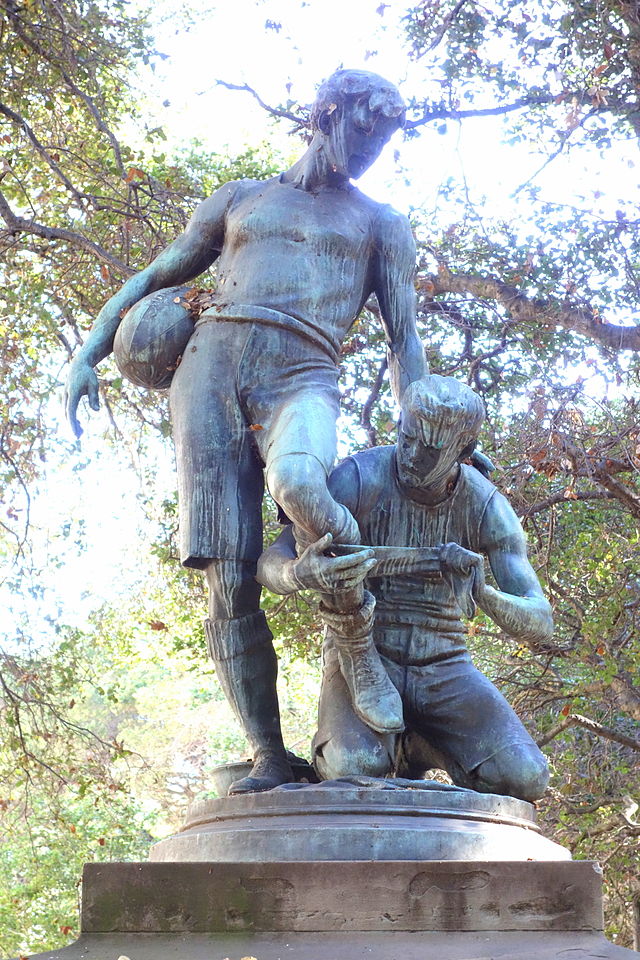
Berkeley alum and deaf sculptor Douglas Tilden’s “The Football Players” (1893) is an interesting part of the lore around Stanford vs. Cal rivalry. A cast and recreation of the sculpture was promised to the winner of back-to-back Big Games, and Cal managed to take “The Football Players” home after winning the games in 1898 and 1899. The sculpture now resides near Berkeley’s first athletic field. The sculpture has rusted and eroded with time, and the inconspicuous faces contain little visual intrigue.
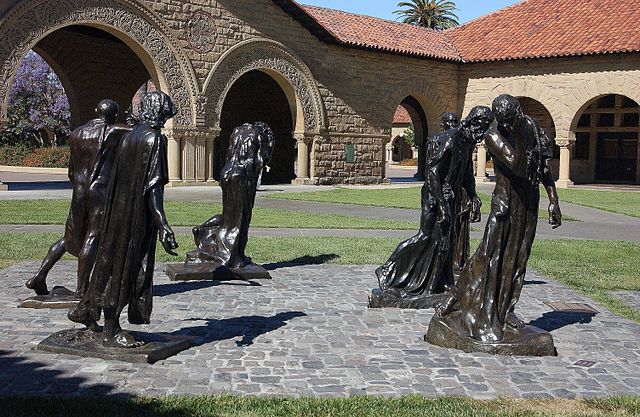
Auguste Rodin’s “The Burghers of Calais” (1884-1895), situated in Stanford’s Memorial Court, commemorated the Hundred Years’ War, which took place in the 14th and 15th centuries. The allure of The Burghers of Calais comes from the expressive composition of each modeled sculpture, all emoting despair and suffering. The body language and facial expressions engage observers in an interactive, face-to-face experience. These figures remain a stunning campus icon in the photo ops of students and visitors alike.
Abstract sculpture wars: “Sieve of Eratosthenes” vs. “Outgrown Pyramid #1”
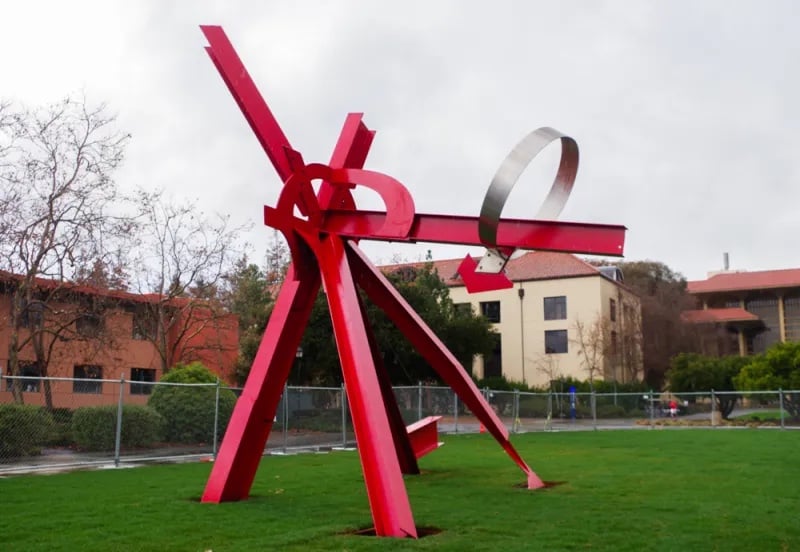
No sculpture better embodies abstraction than Stanford’s own “Sieve of Eratosthenes” (1999) by Mark di Suvero, located between Stern Dining and Crothers Hall. The massive statue, commonly coined “Clifford,” is named after an ancient model to find prime numbers. The tall steel sculpture has four legs and a vibrant red surface, and its head is a mesh of geometric parts that obtrude outwards. Beyond a rendezvous point and a sight many see on their commute to class, the Sieve is irrelevant to most campus activities.

The sculpture contender on the Berkeley side is Richard Hunt’s “Outgrown Pyramid #1” (1973), located at North Gate. Adjacent to various greenery, the smaller sculpture appears just like its name would suggest: a rusted steel pyramid with a segment sprouting on its side that resembles a half-arrow. This piece juxtaposes geometric elements and natural growths. Although it feels static, upon closer observation the pyramidal structure is displayed in its full glory, as it becomes an extension of the natural surroundings.
Mosaic madness: Memorial Church vs. “Old Art Gallery Mosaics”

The Stanford Memorial Church was commissioned by Jane Stanford to honor her late husband Leland Stanford, founder of the University. The vibrant grand mosaic and stained-glass windows gracing the church’s outer entrance invites an ongoing religious dialogue among passersby and church-goers alike. These different mediums all contribute to the larger-than-life effect of the artistic artifact. The mosaic’s intricate portrayal of figures and landscape add liveliness and character to the Main Quad area.
Contending for Berkeley is the “Old Art Gallery Mosaics” (1936) by Helen Bruton and Florence Swift. Located northeast of Sprout Hall and Strawberry Creek, these pieces were the first public artworks created by women on Berkeley’s campus. The individual tiles forming the mosaic make a textured, geometrical appearance that harmoniously shapes the detailed activities of the dancers and sculptor. Intriguingly, Bruton and Swift present the natural softness of the depicted figures’ face and body in an angular manner.
Mystical maidens: “The Angel of Grief” vs. “The Last Dryad”
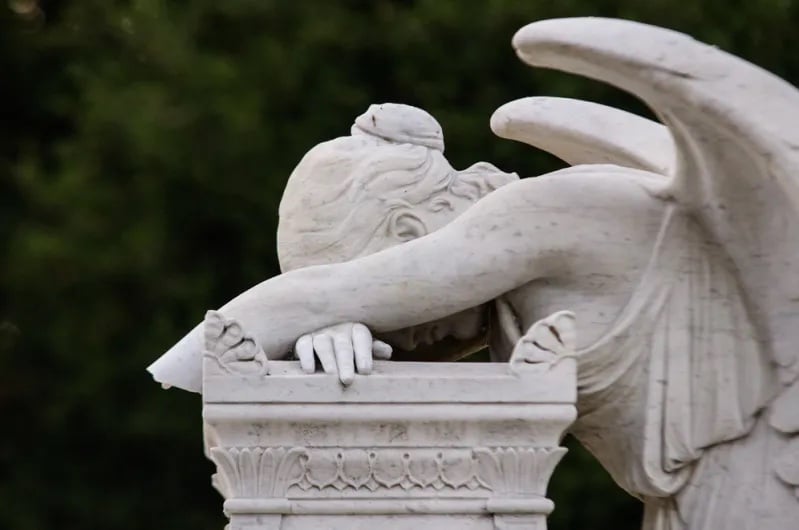
Stanford’s “The Angel of Grief Weeping at the Dismantled Altar of Life” (1894, cast 1900 to 1901) is situated near the Mausoleum in the Stanford Arboretum. This piece, originally designed by William Wetmore Story and carved by the Bernieri Brothers, was commemorated by Jane Stanford to honor her late brother, Henry Clay Lathrop. The white statue depicts an angel, donning classical Roman garb, collapsing atop a funeral altar. Notably, the face of the angel is not visible, so the angel’s sorrow is expressed purely from its body language. The Angel of Grief expresses the anguish and heartache experienced by those left behind.
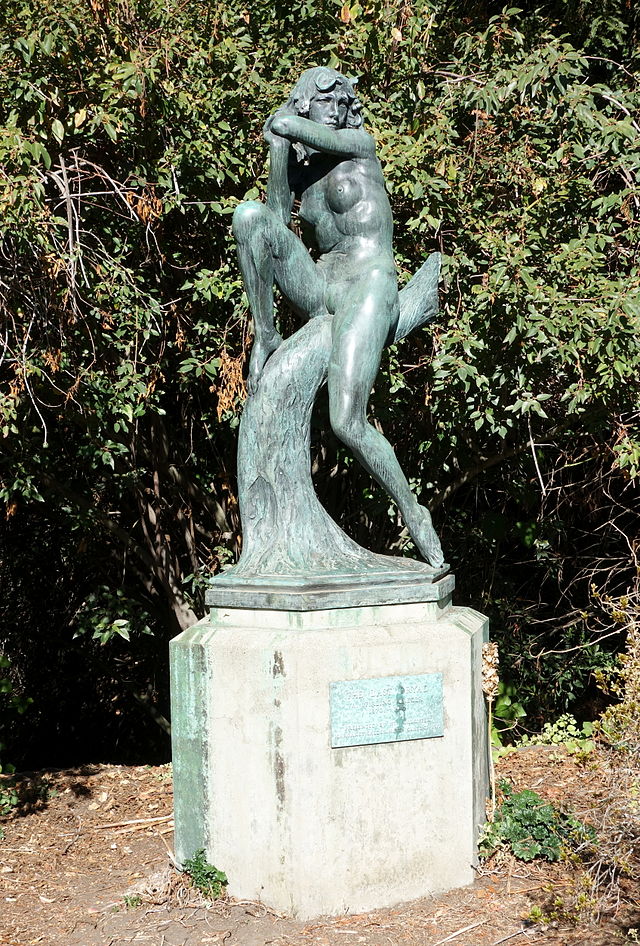
Stirling Calder’s “The Last Dryad” (1921) found its place on Berkeley campus 20 years after the artist’s death. The dryad, a nymph from Greek mythology, symbolizes the intersection of feminine divinity and the natural world. Due to its perceived explicit nudity, the statue shifted locations on the Berkeley campus until the 1970s, when it finally settled in the Faculty Glade. Positioned against lush greenery and trees, the sculpture blends the female body with surrounding nature, captivating passersby with its beauty.
Editor’s Note: This article is a review and includes subjective thoughts, opinions and critiques.
